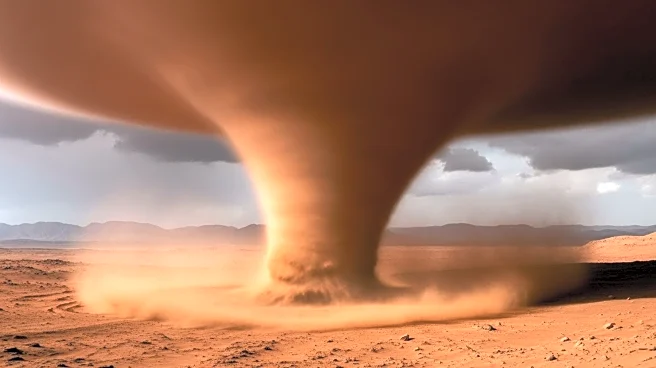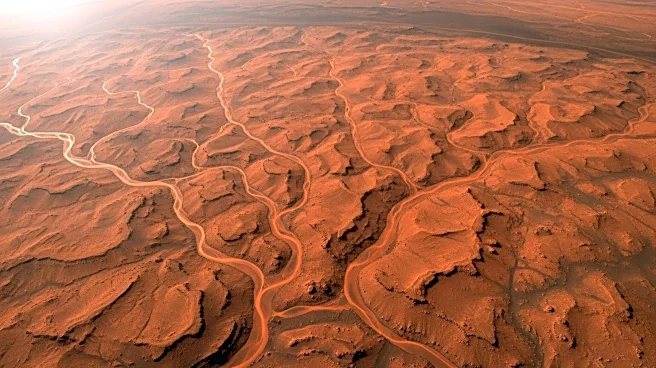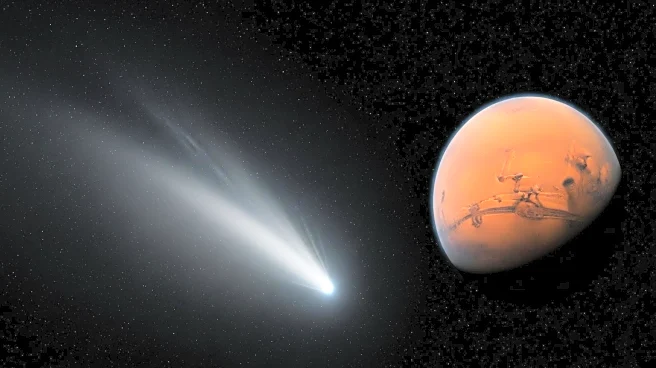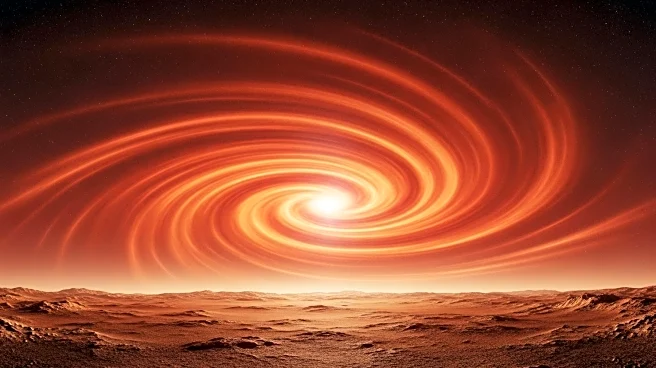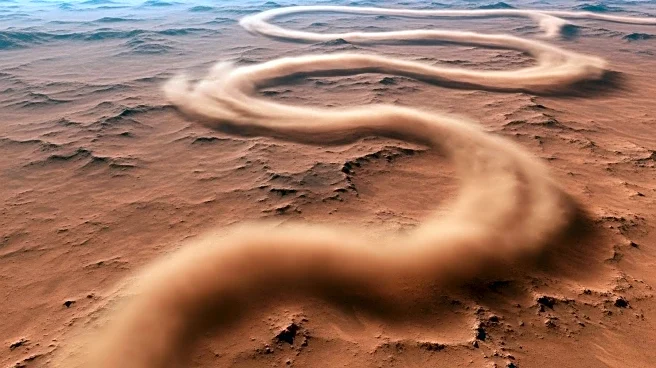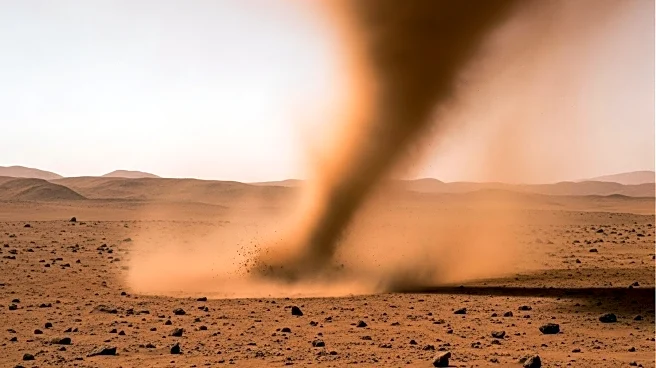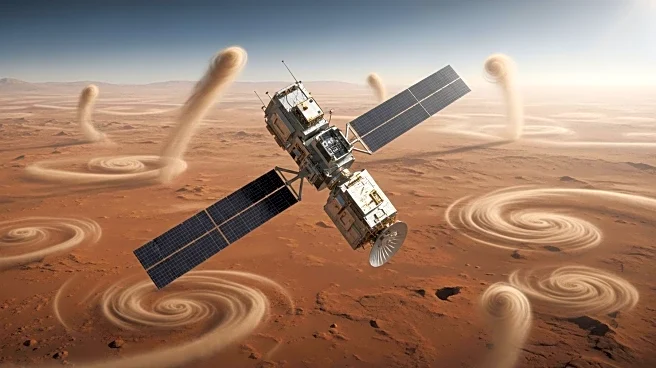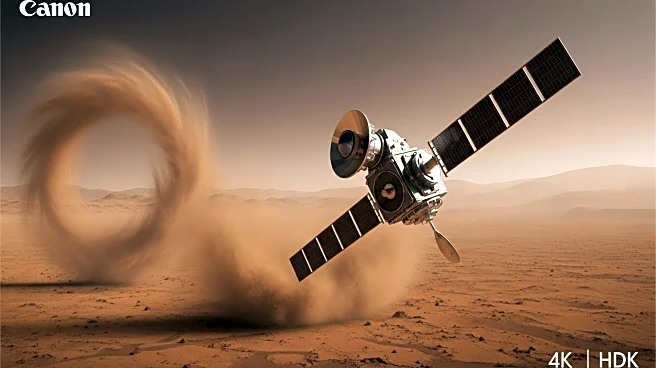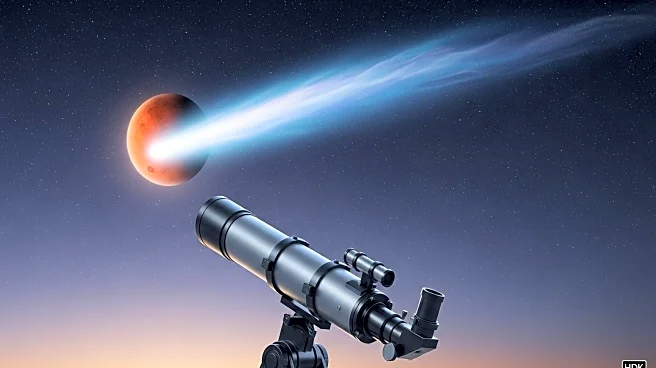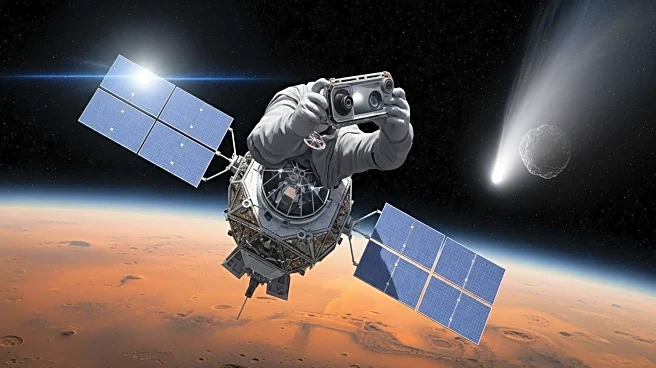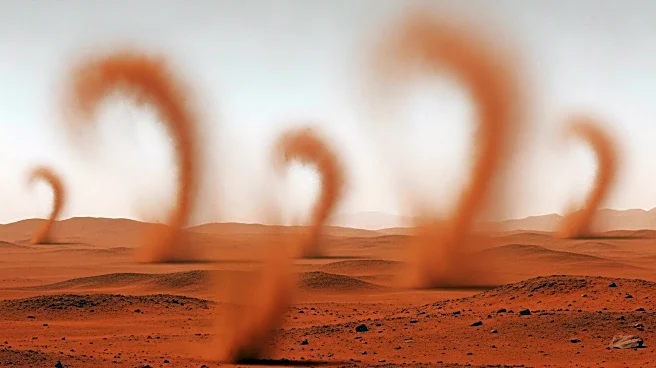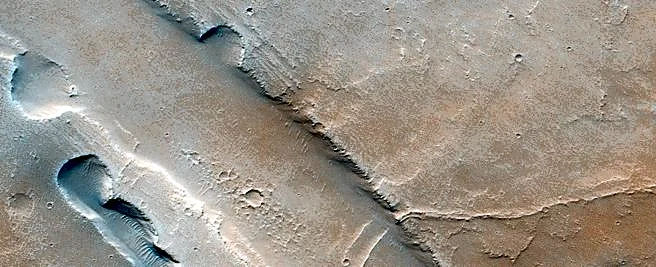What is the story about?
What's Happening?
Recent research led by Dr. Valentin Bickel from the Center for Space and Habitability at the University of Bern has revealed that Martian dust devils and the winds driving them are much faster than previously believed. Using deep learning on thousands of satellite images from European orbiters, scientists discovered that Martian winds can reach up to 160 km/h, which is significantly stronger than earlier estimates. These powerful gusts play a key role in shaping the planet's weather and climate by lifting vast amounts of dust into the atmosphere. The study utilized images from the Mars camera CaSSIS and the stereo camera HRSC, both aboard European Space Agency orbiters.
Why It's Important?
The findings have significant implications for future Mars missions, as understanding wind conditions is crucial for planning and executing landed missions. The research provides valuable data for modeling the Martian atmosphere and surface processes, which are essential for assessing risks and adapting technical systems for future explorations. Additionally, the study contributes to research areas such as the formation of dunes and slope streaks, and the creation of weather and climate models of Mars. The insights gained could lead to more efficient planning of Mars missions and enhance our understanding of the planet's environmental dynamics.
What's Next?
The researchers plan to intensify observations of dust devils and supplement the data with targeted and coordinated observations using CaSSIS and HRSC. This ongoing research aims to improve the efficiency of Mars mission planning and provide a deeper understanding of Martian wind dynamics. Future missions may benefit from these findings by better predicting environmental conditions and minimizing risks associated with high wind speeds.
AI Generated Content
Do you find this article useful?
